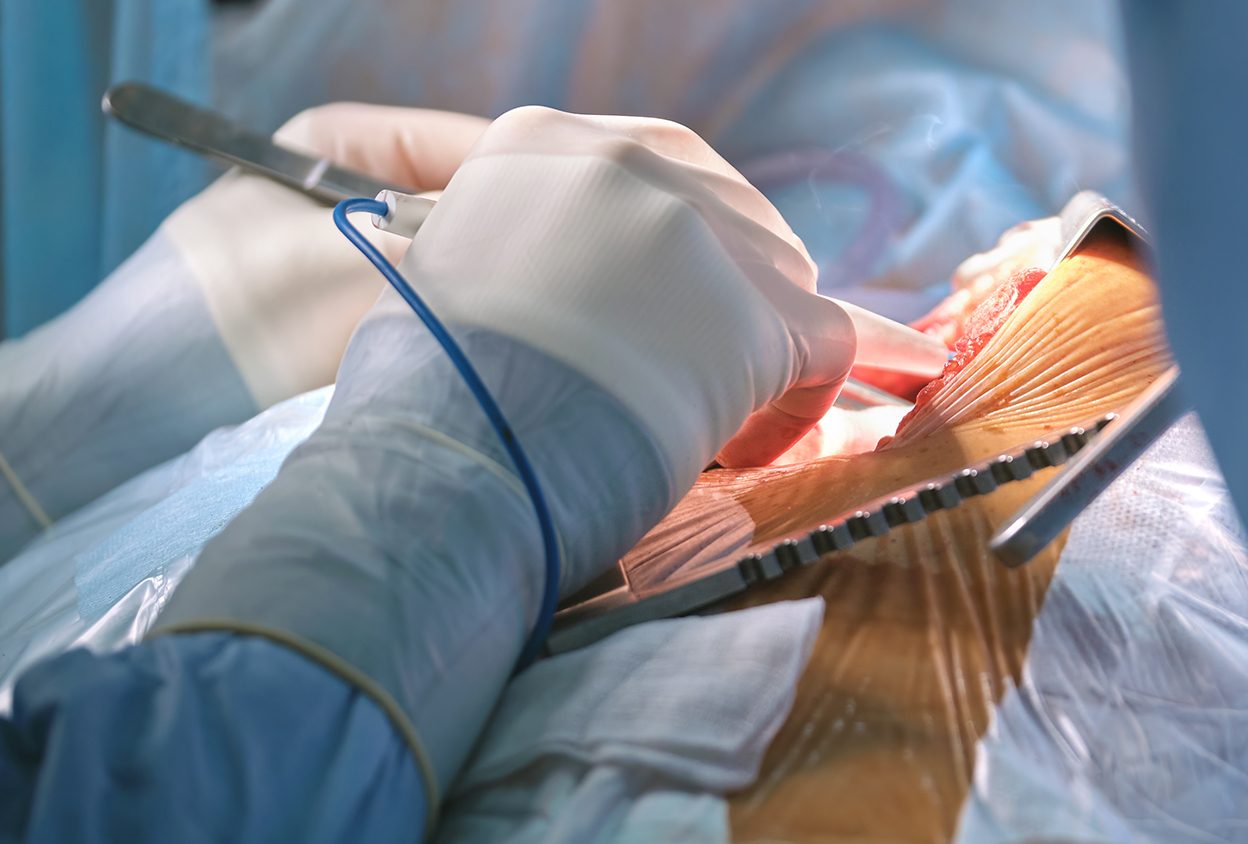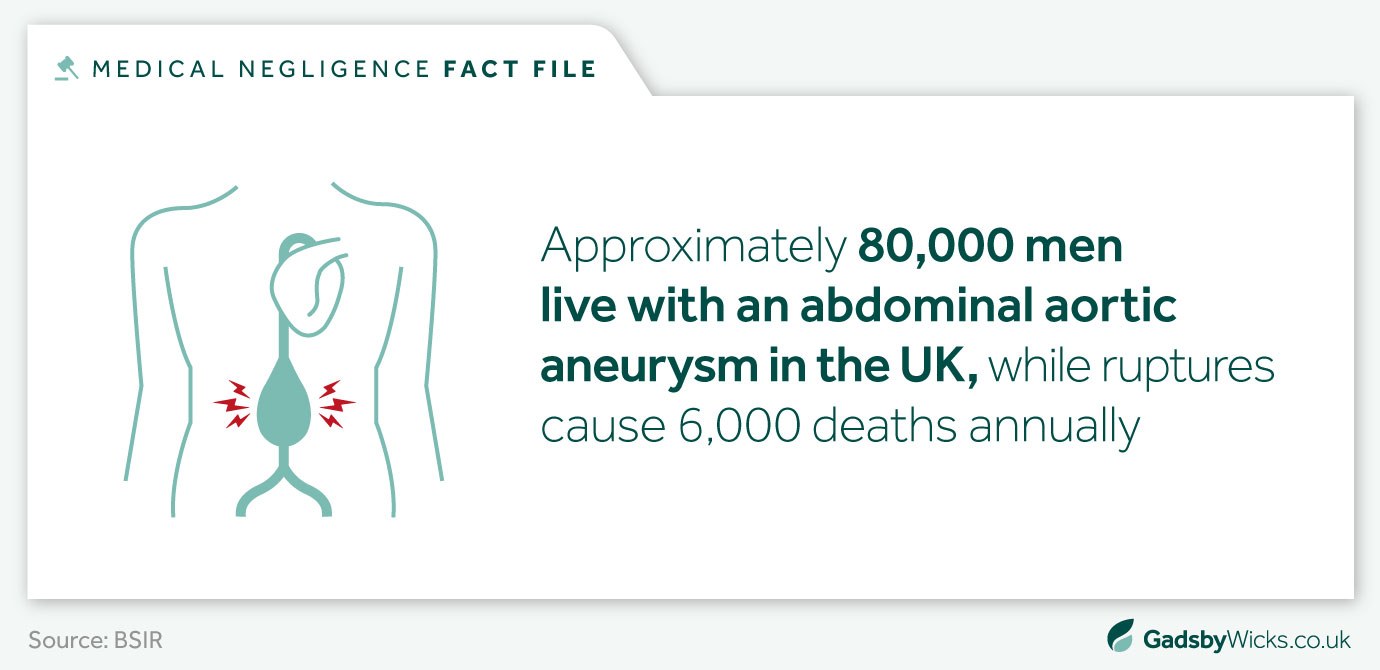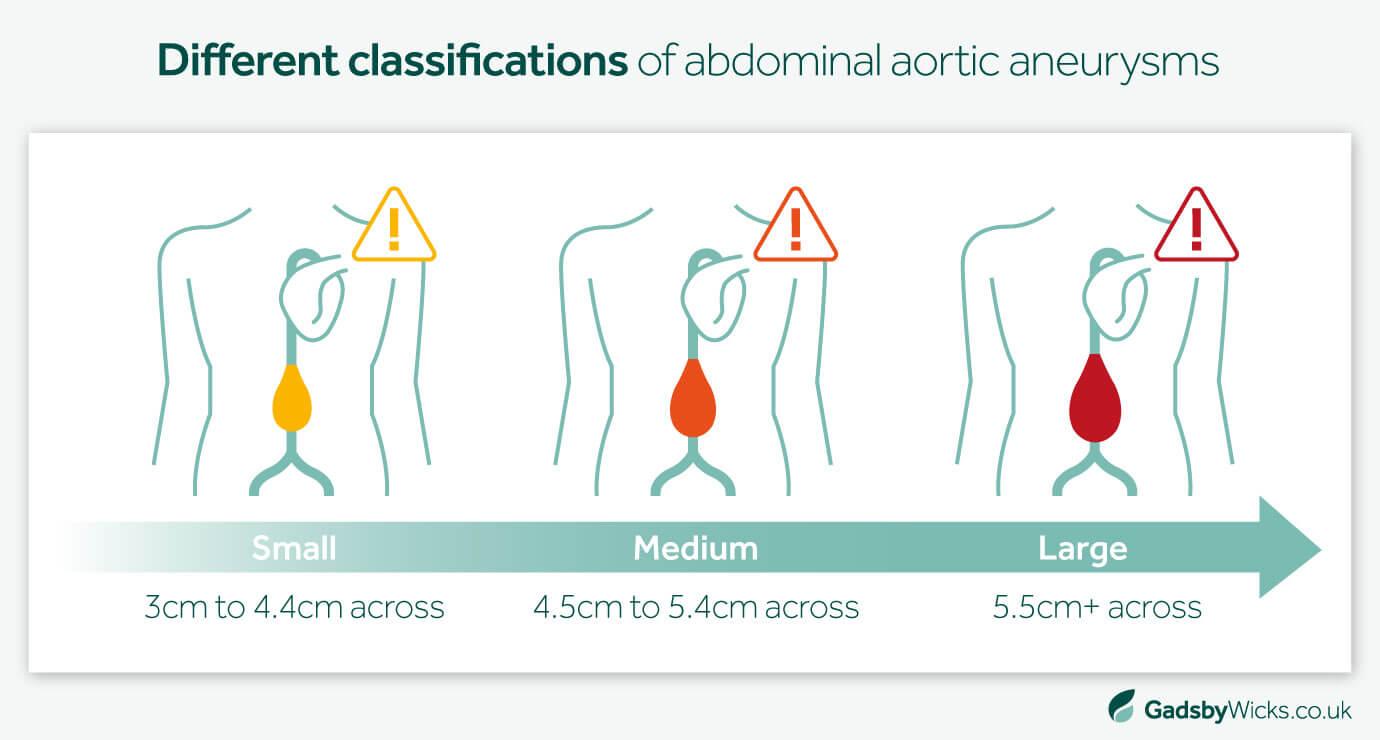
Solicitor and Managing Partner
Gillian Gadsby
If you have been affected by an aortic aneurysm that you believe may have been caused by negligence, we can help you claim the compensation you deserve.

There are many touchpoints where negligence can occur between a medical professional and a patient suffering from an aortic aneurysm. If one is misdiagnosed or not treated properly, the consequences can be severe and possibly even fatal.
If you have had something go wrong due to the actions of a nurse, doctor or hospital, we can help you make an aortic aneurysm claim, help to get the answers you need and to seek the compensation you deserve to support your future.
For your safety and convenience
video meetings are now available with all our specialist solicitors.
Call us on 01245 494929 or request a callback
Call me back
The aorta is the main artery from the heart. It runs through the chest and into the abdomen, where it then splits into smaller vessels, making its role in blood circulation absolutely crucial.
An aortic aneurysm is a bulging of the aorta caused by the walls of the vessel weakening. This can allow blood to pool between the inner and outer layers. Over time, the section of the aorta in which this is happening will start to bulge. If this section is in the abdomen, then it forms an abdominal aortic aneurysm (AAA). This is the most common type of aortic aneurysm.

Another type of aortic aneurysm is a thoracic aortic aneurysm (TAA), which is an aneurysm that occurs higher up in the chest.
When an abdominal aortic aneurysm reaches 5.5cm or greater, it is at high risk of rupturing – the weakened wall bursts. A rupture is often sudden and can be fatal. High-risk surgery can be performed, but this still carries a high mortality rate.
You can visit our insights to learn more about the causes of an aortic aneurysm.
It is common for someone suffering from an abdominal aortic aneurysm to feel no symptoms until the aneurysm reaches a substantial size. At this stage, a person may feel:
Lower back pain
Abdominal pain
A pulsing sensation near the belly button
When an aneurysm ruptures, the symptoms are far stronger and immediate. They include:
Severe abdominal or lower back pain
Dizziness
Sweaty, pale and clammy skin
A fast heartbeat
Shortness of breath
Fainting or loss of consciousness
Because they are at greater risk of this condition, a screening programme for AAA is routinely offered by the NHS to all men aged 65 and over. It also may be offered to women aged 70 or over with underlying risk factors such as high blood pressure.
The immediate danger of an aortic aneurysm depends on how big it is. AAAs are grouped into three sizes:

If small or medium-sized, it is possible no treatment will be recommended beyond frequent scans and healthy lifestyle changes to manage the size of the bulge.
If the AAA is large, endovascular or open surgery is likely to be advised to strengthen it with a graft due to the increased risk of bursting. Should an aneurysm rupture, it can be life-threatening as the window to conduct emergency surgery is often small before the person affected succumbs to blood loss.
The risk of a rupture is greatly reduced when an aortic aneurysm is diagnosed and regularly monitored so that it can be treated with surgery before it becomes too large.
Sadly, this is not always the case, and there are several ways negligent treatment can result in avoidable, devastating outcomes for a patient and their loved ones. These include:
Failing to diagnose or accurately measure an aneurysm
Misreading or misinterpreting an ultrasound or CT scan
Poor monitoring of the progress of an aneurysm
Failing to take appropriate action based on the size of an aneurysm
Delayed or incorrect treatment
The most common type of claim we deal with in this area is a failure to diagnose an aneurysm when it is small enough to be treated. However, if you or a loved one has suffered due to a medical procedure, we can help you establish whether you have a claim and guide you through the process from start to finish.

As qualified and specialised medical negligence solicitors with over 20 years experience, we are experts at handling aortic aneurysm claim cases.
Our credentials and established reputation mean that hospitals and trusts are willing to work with us, and often recommend us, to seek fair outcomes for claimants to receive the compensation they deserve.
Trust us with your compensation claim and contact us today to see how we can help you.
Fundamentally, the consequences of medical oversight can prove life-altering. If the actions or inactions of a healthcare professional lead to delayed diagnosis or treatment of an aortic aneurysm, a patient may suffer severe blood loss and organ damage, which can affect their long-term health.
The consequence of these injuries can also have a huge impact on a person’s quality of life. A longer stay in hospital may impact an individual’s earnings, and both socialising and routine tasks can become infinitely more difficult to perform.
Beyond the physical consequences of substandard care, poor treatment can have a devastating impact on a patient’s emotional and psychological wellbeing. For instance, a near-death experience can cause someone to suffer PTSD, something that would have been avoided if an aneurysm was treated before it could result in a rupture.
There is a high likelihood that a ruptured aortic aneurysm will prove fatal to the person affected, leaving a life-changing impact on their loved ones and dependents.
If a healthcare professional fails to deliver care to an acceptable standard, and these actions or inactions resulted in avoidable injury or loss of life, this may be grounds to pursue an aortic aneurysm case.
However, not every consequence will come as a result of clinical oversight. To determine whether medical negligence played a part in the treatment you or your loved one received, we will work with you to establish the three key elements needed for any successful compensation claim:
A healthcare professional breached their duty of care toward you
You suffered pain and suffering, injury, loss or damage
The harm you suffered was directly related to the breach of duty
At Gadsby Wicks, we thoroughly investigate all available evidence and talk to trusted medical experts, such as cardiologists and cardiothoracic surgeons, to build an understanding of what happened to you, and achieve the best possible outcome.
The compensation that a claimant receives following a successful aortic aneurysm medical negligence case can offer crucial support. In addition to loss of earnings, the compensation awarded can be used to pay for:
Adaptations around the house
Carers, cleaners or additional support
Ongoing psychological and physical therapies
Equipment for adapted vehicles
Follow-up surgeries or treatments
Sadly, in some circumstances, medical negligence in aortic aneurysm cases can prove fatal. While no amount of compensation will prevent such a loss, the recompense awarded can ease the financial burden on a family in the weeks, months and years after this tragedy. Those who may claim after the death of a loved one include:
Those named as beneficiaries of the deceased’s estate in a will or entitled under intestacy law
Those who fall into one of the categories of people entitled to claim a bereavement award under The Fatal Accidents Act 1976
Those who were dependent on the deceased either for services or finances provided to them at the time of death, or had a reasonable expectation that they would become so dependent in the future
To learn how to make a claim following a death by medical negligence, read our insights.
In most circumstances, we would expect a claim of this nature to take 2-5 years to reach final settlement. But no two aortic aneurysm claims are the same, and it is impossible to immediately know how long your claim will take to conclude. Several factors can influence this, such as:
The stance taken by the defendants
The availability of relevant medical experts
The need for court proceedings
Entrusting your claim to medical negligence specialists helps ensure that every step of your claim is handled in an efficient, professional manner. We know who to contact and what is required at each stage to make the process as streamlined as possible.
Like the majority of medical negligence claims, the standard time limit for an aortic aneurysm claim is three years from the date you became aware of your injury. There are exceptions to this rule:
Claimants under the age of 18 have until their 21st birthday to claim
Claimants who are considered mentally incapable have no time limit to claim
The three-year time limit starts to run again if the injured person dies before the initial three-year period has expired
If a loved one has died due to a medical procedure, misdiagnosis or another negligent act, their dependents have three years from the date of their death to make a claim.
If your three-year window has expired, we would still encourage you to get in touch for a free consultation. Every claim is at the discretion of the Court, and we can advise on whether your claim is still viable.
We understand how devastating it is to be let down by someone you trust. Whether this has happened to you, or someone you care about, we have decades of experience dealing with aortic aneurysm negligence cases, and devote the time and resources to fully investigate your claim.
To guide you through this process and deliver the best results possible, we tirelessly investigate all evidence, medical records and witness statements to establish what happened. We also work closely with trusted medical experts to determine the cause of an injury and quantify the value of your claim.
We offer our legal services on a ‘No Win, No Fee’ basis
We are authorised and regulated by the Solicitors Regulation Authority
Our commitment to medical negligence began in 1993
Our in-house medical professionals assist with legal cases
If we believe you have a legal case, we will work with you every step of the way to ensure that you receive the closure, compensation and justice you and your family rightly deserve.
If you or a loved one have experienced negligence leading to an aortic aneurysm and would like to speak to someone about your options, our team is here to listen and advise you on your next steps.